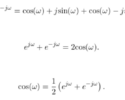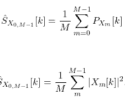Table of Contents
Introduction
This blog describes how to count in binary numbers and uses decimal numbers (0-9) in some examples to make the topic easier to understand. A table describes how counting in binary numbers relates to counting in decimal numbers, and demonstrates that they represent the same values.
More blogs:
Decimal Numbers (Base 10)
The numbers you use in every day life are called “decimal” numbers, meaning they are based on the number 10. The decimal numbers are 0, 1, 2, 3, 4, 5, 6, 7, 8, 9. This set of numbers are sometimes referred to as “base 10”, meaning there are 10 individual numbers. Just as the 26 letters of the alphabet make up all possible words in the English language, so to do the numbers 0 – 9 make up all possible decimal, or base 10, numbers.
Counting in Decimal
Counting in decimal proceeds through the digits 0 – 9,
(1) ![]()
A second digit is needed to represent more numbers. Since there are only ten total numbers, its necessary to start combining some of the digits 0 – 9 together to build larger numbers. The next number is created by adding a 1 digit and counting to repeat the sequence 0 – 9 in the second digit,
(2) ![]()
Again, its necessary to combine the set of numbers to make larger numbers. The first digit is incremented from 1 to 2, and then the second digit again repeats 0 – 9,
(3) ![]()
This pattern repeats until we reach 99,
(4) ![]()
A 1 digit is prepended to create an even larger number and the other digits roll-over back to 0,
(5) ![]()
Binary Numbers (Base 2)
Binary numbers are made up of two digits: 0 and 1, which is why binary math is sometimes referred to as “base 2”. The digits 0 and 1 make up all possible base 2 numbers, just as the digits 0 – 9 make up all possible base 10 numbers.
Counting in Binary
Counting in decimal proceeds through the digits 0 – 1,
(6) ![]()
Now a second digit is needed to represent more base 2 numbers. The 1 digit is prepended to create more numbers,
(7) ![]()
Another 1 is prepended to create even more numbers,
(8) ![]()
This process continues to repeat,
(9) ![]()
and then
(10) ![]()
By convention, a 0 digit can be prepended to a binary number with no change in value. For example, binary 1 and binary 01 are the same value. Similarly, binary 11 and 011 are the same value. Any number of zeros can be added to the front of a number with no change in value, such that 1101 is equivalent to 000001101.
Counting up to 4 digits could be represented by:
(11) ![]()
Comparing Binary to Decimal
Because there are less numbers in base 2 than base 10, the number of digits in base 2 numbers grows more rapidly than base 10, although they still represent the same value. The following table presents the equivalent base 2 number to the base 10 number.
(12) 
Conclusion
This blog described how to count in binary numbers, base 2, and decimal numbers (0-9) with provided examples. A table was used to compare the binary and decimal values, showing how the two number formats still represent the same values although with different digits.
More blogs:








